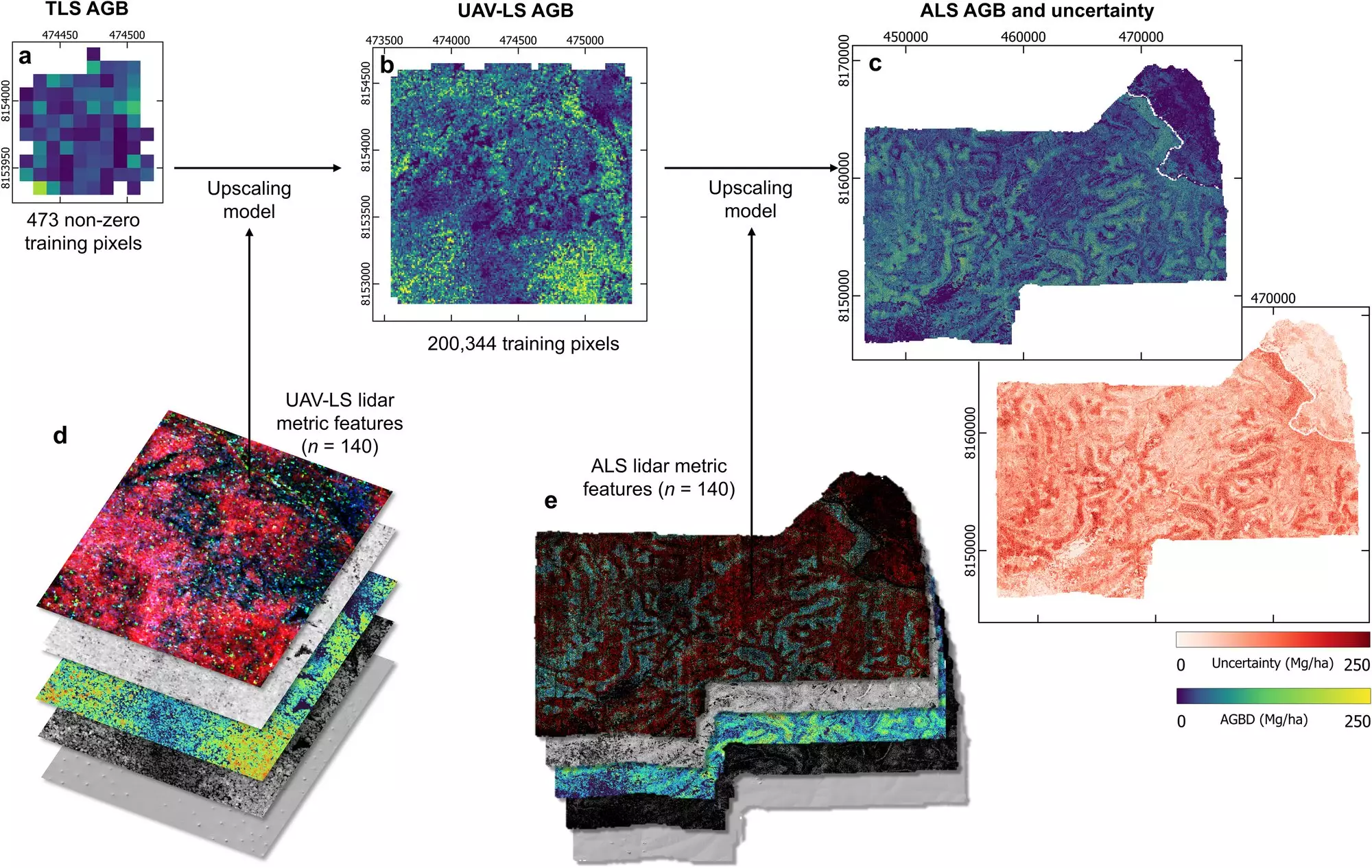Mozambique’s miombo woodlands, often overlooked in global ecological discussions, have emerged as critical players in the fight against climate change. Recent research spearheaded by Sylvera, alongside prominent institutions like UCL, has revealed that these woodlands store substantially more carbon than traditional assessments suggested—between 1.5 to 2.2 times more. This astonishing finding underscores the necessity of reevaluating our understanding of these ecosystems, not just as trees in the landscape but as vital carbon sinks saturated with ecological and economic potential.
Historically, assessments of carbon storage relied heavily on allometric methods that correlate easily measurable tree characteristics—like diameter and height—with carbon storage capabilities. Unfortunately, these antiquated methods do a disservice to large trees, failing to adequately represent their biomass. The recent study, which compiled an astounding 450 billion 3D measurements of 8 million trees, marks a pivotal turn away from traditional methodologies, employing cutting-edge lidar technology to paint an accurate image of carbon storage in the region.
Mitigating Climate Change Through Enhanced Data Collection
The sheer scale of data gathered—across 500 square kilometers of the miombo woodland ecosystem—offers a fresh lens through which to analyze carbon stocks. Utilizing ground-based and aerial laser scanning, researchers achieved unprecedented accuracy in estimating aboveground biomass. This meticulous approach is indicative of a broader trend within environmental science: the marriage of advanced technology and ecological research to yield actionable insights. The potential to store an estimated 13.6 billion metric tons of equivalent carbon dioxide (CO2e) in these woodlands calls for immediate policy action aimed at protection and restoration.
Misjudged until now, the carbon sequestration capacity of miombo woodlands goes beyond mere numbers. The implications of this research suggest that the loss of these ecosystems could release far more carbon into the atmosphere than expected, exacerbating climate change. Governments, businesses, and financial sectors need a paradigm shift not only to recognize this potential but to prioritize the safeguarding of these forgotten forests.
A Call to Action: The Financial Implications
According to Allister Furey, CEO of Sylvera, the fight against climate change primarily hinges on finance. Vast investments flowing toward proven solutions are crucial, primarily those centered around natural carbon sinks like the miombo woodlands. However, complexities in measuring carbon accurately often discourage investors from committing funds. This reluctance highlights the necessity of developing a robust framework that instills confidence in the viability and effectiveness of natural carbon credit initiatives.
The findings from this study indicate that the intrinsic value of ecosystems like the miombo woodlands may be much greater than previously assumed. By demonstrating the efficacy of advanced measurement techniques, Sylvera aims to bridge a gap between ecological science and financial investment, driving funds toward sustainable practices with a proven return on climate impact.
The Intersection of Technology and Nature
Incorporating state-of-the-art technological methods such as multi-scale lidar allows researchers to glean insights that were previously unfathomable. These advances can be integrated into larger projects like NASA’s GEDI—aimed at mapping biomass from space. Dr. Laura Duncanson emphasizes the critical need for high-quality calibration and validation data to enhance these satellite missions. The collaboration between researchers and institutions illustrates a growing recognition that the world’s ecosystems can benefit from modern technology.
Using advanced analysis techniques not only allows us to uncover the ecological significance of areas like the miombo woodlands, but helps refine our focus on actions that restore these environments. Understanding the precise carbon stock is essential in addressing climate challenges and crafting innovative solutions for mitigating environmental impacts.
Understanding the Cultural and Spiritual Importance
Beyond their environmental implications, miombo woodlands carry cultural and spiritual significance for local communities. These biomes are intertwined with the livelihoods of millions, offering resources that sustain their daily lives while also serving as sites of cultural heritage. Protecting and restoring these woodlands is not merely an environmental or financial issue; it is a matter of social justice and recognition of indigenous rights.
The strengths of the miombo woodlands can no longer be sidelined; the evidence is overwhelming. As this research eloquently illustrates, careful stewardship of these resources fosters not only environmental benefits but also cultivates the resilience and prosperity of the communities that depend on them. The call to action is clear—if we are to galvanize humanity’s collective effort against the growing specter of climate change, we must invest in, protect, and restore these carbon-rich ecosystems while nurturing the cultural identities they sustain.


Leave a Reply